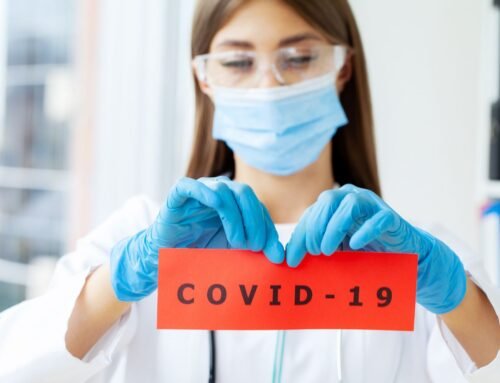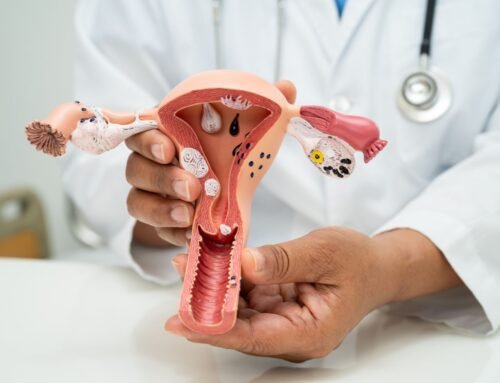The importance of medical healthcare, including services like the emergency room, cannot be overstated, as it plays a crucial role in maintaining and improving the overall well-being of individuals and communities.
In summary, medical healthcare is vital for individual and societal health, contributing to a higher quality of life, economic prosperity, and the overall well-being of communities. Ensuring access to affordable and high-quality healthcare is a fundamental goal for governments and societies worldwide.

When should I go to the emergency room?
If you’re facing a medical emergency, please seek immediate assistance from a healthcare professional or call emergency services.
Here are some situations in which you should go to an emergency room:
Chest Pain or Pressure
If you are experiencing chest pain or pressure, it could be a sign of a heart attack. Seek emergency medical attention immediately.
Difficulty Breathing
Sudden, severe shortness of breath or difficulty breathing may indicate a serious respiratory or cardiac issue and requires immediate attention.
Severe Injuries
If you have sustained a severe injury, such as a broken bone, deep laceration, or head injury, go to the emergency room for prompt evaluation and treatment.
Severe Abdominal Pain
Persistent and severe abdominal pain may indicate a serious medical condition, such as appendicitis or a gastrointestinal issue, and requires immediate attention.
Signs of Stroke
If you experience sudden numbness or weakness, especially on one side of your body, confusion, trouble speaking, or difficulty seeing these could be signs of a stroke. Seek emergency care.
Loss of Consciousness
If someone loses consciousness or is unresponsive, seek emergency medical attention immediately.
Seizures
If you or someone else is experiencing a seizure for the first time or if seizures are prolonged, seek emergency care.
Severe Allergic Reactions
Anaphylaxis, a severe allergic reaction, can cause difficulty breathing, swelling, and a drop in blood pressure. Seek emergency care if you suspect anaphylaxis.
Severe Headaches or Migraines
If you experience an exceptionally severe headache or migraine accompanied by other symptoms such as confusion, weakness, or visual disturbances, it may require emergency attention.
High Fever in Infants or Young Children
If an infant or young child has a high fever, especially if it’s accompanied by other concerning symptoms, seek emergency medical attention.
It’s important to note that if you’re unsure whether a situation is an emergency, it’s better to err on the side of caution and seek medical attention. In life-threatening situations, every minute counts, and prompt medical care can make a significant difference in outcomes.
If possible, call emergency services (such as 911 in the United States) for guidance on what to do before arriving at the emergency room.
Worsening Symptoms
If you have a known medical condition, and your symptoms are rapidly worsening or becoming more severe, it may be necessary to seek emergency care.
Uncertainty
If you’re unsure about the severity of your symptoms or whether they constitute a medical emergency, it’s better to err on the side of caution and seek emergency medical attention.
Remember, the decision to go to the emergency room should be based on the severity and urgency of your symptoms. If in doubt, it’s always best to consult with a healthcare professional.
When is it best to go to urgent care?
Urgent care centers are designed to provide medical care for non-life-threatening conditions that require prompt attention, but are not severe enough to warrant a visit to the emergency room.
The best time to go to urgent care may depend on several factors:
- Regular Business Hours: Urgent care centers typically operate during regular business hours, which may vary by location. Going during these hours can be convenient if your symptoms are urgent but not life-threatening.
- Avoid Peak Times: If possible, try to avoid peak times, such as evenings after work or during lunch hours when urgent care centers may experience higher patient volumes.
- Know the Services Offered: Urgent care centers vary in the services they provide. Before going, make sure the center can address your specific medical needs.
It’s important to note that urgent care is not a substitute for emergency care in life-threatening situations. If you believe your condition is severe or potentially life-threatening, seek emergency treatment.
Ultimately, the best time to go to urgent care depends on your specific situation and the urgency of your medical needs.
What is the primary consideration when choosing between the emergency room and urgent care?
The primary consideration when choosing between the emergency room (ER) and urgent care is the severity and urgency of your medical condition.
Here are some general guidelines to help you decide:
Emergency Room (ER)
- Life-Threatening Conditions: If you or someone else is experiencing a medical emergency that poses an immediate threat to life such as chest pain, difficulty breathing, severe bleeding, loss of consciousness, signs of a stroke, or major trauma, go to the emergency room or call 911 immediately.
- Complex or Severe Conditions: If your symptoms are complex, severe, or rapidly worsening and you believe they require a higher level of care the emergency room may be the most appropriate choice.
- Diagnostic Testing: If your condition requires immediate diagnostic tests such as CT scans, MRIs, or other advanced imaging the emergency room is equipped to provide these services.
Urgent Care
- Non-Life-Threatening Conditions: Urgent care is suitable for non-life-threatening conditions that require prompt attention, but are not severe enough to warrant a visit to the emergency room. Examples include minor injuries, infections, and acute illnesses.
- Convenience and Accessibility: If your primary care physician is not available and you need prompt care outside of regular office hours, urgent care centers often provide convenient and accessible healthcare services.
- Minor Injuries and Illnesses: For minor injuries such as sprains, strains, minor fractures, or common illnesses like the flu or urinary tract infections, urgent care may be a more efficient and cost-effective option.
- Limited Diagnostic Services: Urgent care centers typically offer a range of diagnostic services such as X-rays and laboratory tests, but may not have the same extensive capabilities as an emergency room.
Considerations
- Cost: Emergency room visits are often more expensive than urgent care visits. If your condition is not life threatening visiting urgent care may be a more cost-effective option.
- Wait Times: Emergency rooms may have longer wait times, especially for non-life-threatening conditions. Urgent care centers often provide faster service.
- Follow-Up Care: If follow-up care is needed, your primary care physician or a specialist may be involved. Urgent care centers can help coordinate follow-up care, but the emergency room may have more limited follow-up services.
Share This Story, Choose Your Platform!
Let’s Stay In Touch
Let’s Stay In Touch
Subscribe to the Gam-Med’s newsletter to stay in the know of changes, events, new policies and procedures.




